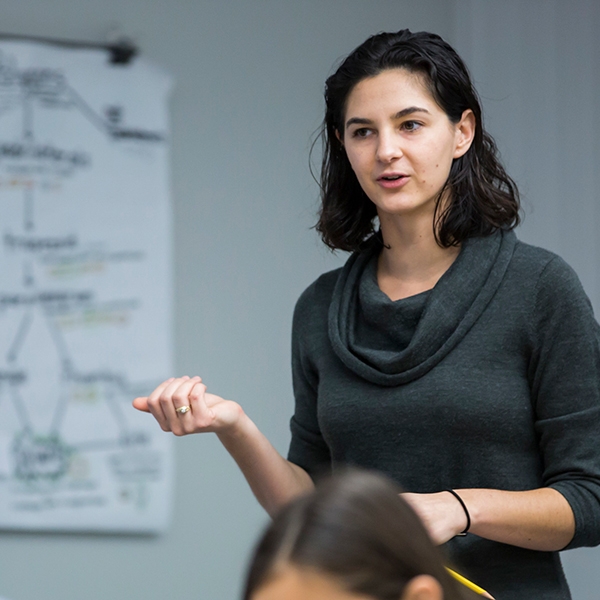
“Information consumes attention. A wealth of information creates a poverty of attention.” – Herbert Simon
We know that all effective teachers use data to inform instruction, but with the integration of technology in classrooms and the need and desire to personalize instruction for students, the different academic and non-academic datasets teachers now have access to are nearly endless. Even many non-blended, more traditional data-driven classrooms already use exit tickets, worksheets, activities, quizzes, and tests to understand how students perform. The time investment required to understand and use all of these data often serves as a limiting factor for how many data points are available to teachers.
When adding technology to the mix, the amount of student progress information can be overwhelming. The volume of information we can view on a student’s learning progress in an hour is often more than what we would look at previously in a week.
Given how easy data is to generate and collect, it’s no wonder schools and educators get caught up in it. More data, however, does not always lead to a better understanding of the student. So, what do we pay attention to in this deluge?
In our conversations with practitioners, we’ve learned it’s utterly critical that education teams have a clear and shared vision for how they want to use data to improve student learning. This vision can help them identify which data are most important and how to use them, as well as which tools might help them generate this data. It is merely a starting point to help organize and make sense of messy education data, and can hopefully be built upon as educator (and student!) capacity to deal with huge amounts of data and the interoperability of technology tools advances.
Below are some initial guiding questions that can help educators, as well as other critical stakeholders such as students and guardians, think about the role they want data to play in their school or classroom:
- What do we want to know about our students? This question seems straightforward, but it is important to point out that there’s no mention of the word “technology” in it. Before thinking about technology, educators should consider what information they need to know about their students. The conversation likely emphasizes various, common forms of academic performance data, but it’s also worth expanding the conversation beyond core academic components and considering things like non-cognitive skills and student interests, for instance. Ultimately, teachers may or may not choose to use these data points, but there’s still great value in having the conversation.
- What questions need to be answered throughout the year to better understand students and their needs? Student strengths, student gaps in knowledge, and student progress are common examples among a long list of possible answers to this question. It’s important not to feel limited as you develop this list of questions. While it may not be possible to collect data about all of them in a single year, there’s still a great deal of value in identifying what needs to be known.
- Which of these questions are the most important? Prioritizing these questions helps educators focus their efforts on the most important data. If only a few questions can be answered throughout the year, which answers will mean the most?
- When looking at this list of questions, which ones will data from learning programs help answer? This question should help educators determine which tools to use and how to use them. If learning programs can help answer the high-priority questions, in whole or in part, it is likely worth the investment of time and energy. They may also be able to answer some questions that educators may not have been able to answer before. As educators move down their list of questions, weighing the value of them against the cost (time, money, energy) of technology, they will get a better sense of which tools are worth pursuing, and with what frequency.
Once teams have this data vision in place, here are a few guiding points to enact and iteratively improve the vision as educators review and analyze data.
- Start simple. Chances are the list of questions developed is not terribly surprising, and teaching and learning in its current form can address some of these. After you’ve identified some additional data you think could be helpful, start with a single tool or program (or a few at most) to see if it can help you answer more questions or answer the highest priority questions more completely. Don’t just kick the tires – take it for a test drive. The data may not be apparent on day one, so be sure to get to know the program and its capabilities. If it’s not working, don’t use it.
- Clarify data needs. If the tool didn’t work, it’s worth understanding why. What was it about the tool and/or data that wasn’t helpful in answering questions about your students? Was it too hard to use? Was the data too difficult to read? Reflecting on why it didn’t work can help you better clarify what you need and better identify what can help meet that need.
- Know your limits. If new data and technology are improving teaching and learning, it could be worth pursuing additional avenues to increase this impact. It is important to remember that the data available is nearly endless (and often poorly organized), and adding to it can significantly increase the complexity. If you have time and energy after your simple start, consider what you might be able to add without stress and frustration. If you’re unsure about the possible downside, err on the side of caution, spending more time maximizing the value of what’s currently working well and revisiting possible additions at a future point in time (e.g., break, planning days).
- Involve your students. Educators aren’t the only ones adjusting to a world of nearly ubiquitous data. Not every student needs to be a data scientist, but data fluency is becoming an increasingly more important skill in today’s world. Educators should work to provide students with more exposure to and experience with their own learning data. This can not only lead to improved data fluency but can also increase student ownership and engagement with their own learning. It will require some upfront investment time on behalf of educators, but can be a time-saver in the long run as progress monitoring shifts away from the teacher and more towards the students, freeing up teacher time for higher impact engagements.
So, what do you think? Do you, your team, or school have a data vision? What do you include, and what do you leave out?

